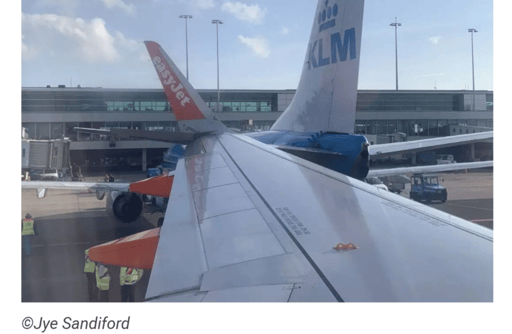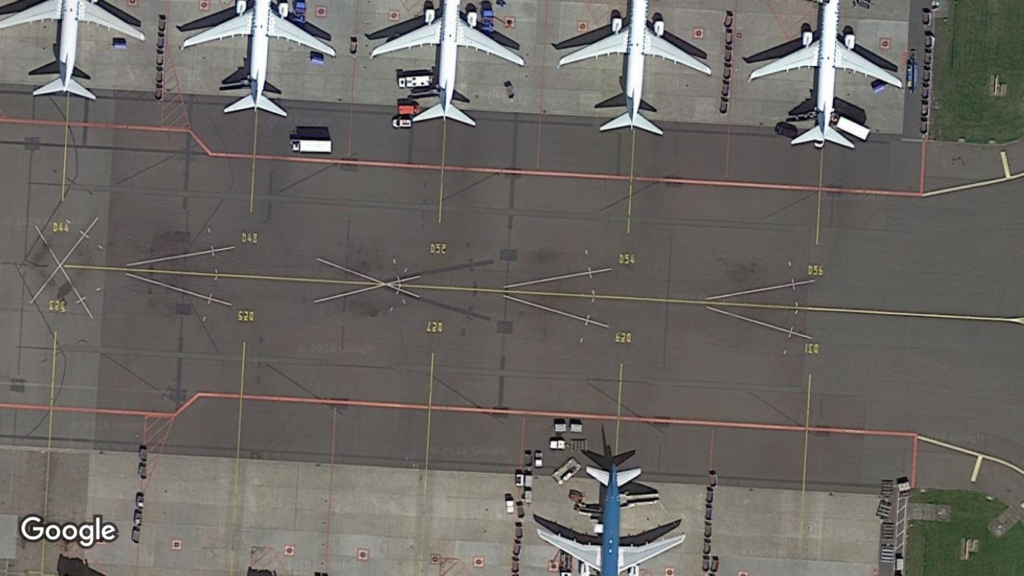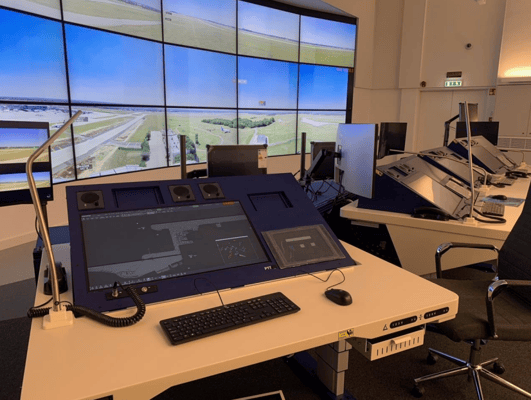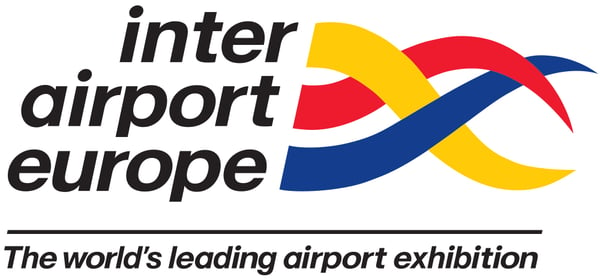An Easyjet Airbus A320 and a KLM Boeing 737 collided during pushback at Amsterdam Schiphol airport on the 9th of July. This incident got a lot of attention and triggered a long and interesting discussion on Linkedin. This article tries to summarize the key points. The goal is not determine responsibilities. This is not our role and we don’t have sufficient knowledge of the operational procedures anyway. There will be a lot of finger-pointing too, but not in this article and not from us. The point is really to discuss what could be different and hopefully learn something from this incident.

Roles and responsibilities
Pushback operations can be organized in different ways and different airports have different rules. One option is to give Air Traffic Controllers (ATCOs) the responsibility for pushback deconfliction. In this model, ATCOs shall not give conflicting pushback clearances. Another way is to give the responsibility to pushback drivers. In such a model, the clearance given by the ATCO means that the aircraft is allowed to leave the gate but the responsibility for avoiding collisions lies with the pushback driver or wing walkers, if present.
While the captain remains ultimately in charge of the aircraft’s safety, they must delegate this task as they have no way to see the surroundings of the aircraft.
Eyeballing and paying attention is obviously part of the job as well and this will always be the ultimate safety net. But if there is only one take away from this incident, it is that “look out” can not be the only safety net. The answer to such an incident cannot boil down to “look better”. This would be like saying to en-route ATCOs “be more attentive” and not use safety nets.
Causes for the confusion
Right after the collision occurred, the ATCO said on the frequency that he thought that one of the aircraft was parked somewhere else. He obviously would not have given simultaneous pushback clearances otherwise. The investigation will likely look for the causes of this confusion. Was the information given to the ATCO by the flight plan system wrong? Was one of the flights parked at an unusual position for this airline? Were there similar callsigns at different parking positions?
Phraseology improvement?
The typical phraseology for pushback does not include the gate number but simply the callsign and a pushback clearance, which requires a classical readback. If the ATCO thought that one aircraft was at another gate, possibly the same number but a different area (e.g. H62 vs. E62), adding the gate in the pushback clearance could add an extra level of safety. The same is done already for runways, so why not for pushback? A pushback clearance would then be like:
GND: “KLM123, stand E62, cleared for pushback”
KLM123: “Stand E62, cleared for pushback”
If the ATCO gets confused, whatever the reason, this would be one more chance to identify the issue and clarify the situation even before starting the pushback.
Clearance based safety net
Putting clearances in a system can allow for detection of conflicting clearances. This can be the A-SMGCS or the Electronic Flight Strips System. Assuming that the data is correct, the system could then alert the ATCO in case of conflicting clearances. Similar features exist as a way to prevent runway incursions or add an extra level of safety for runway crossings.
Different factors must be considered here and this solution is not as easy as it may seem to implement. Firstly, the input must be efficient enough to not slow down the ATCO in their work and not generate too much head down time. Capturing a pushback clearance digitally is not easy, especially at complex airports. Depending on the layout, pushback may have an associated direction (i.e. pushback facing east or pushback facing west). Some airports also require pushbacks of different lengths. A normal pushback can block the next stand, so the ATCO can require a long push. Similarly, some airports have push then pull procedures. The aircraft first gets pushed back from the gate and then gets pulled along the taxiway to free up access to other stands. All these must then be captured by the system to correctly detect conflicts.
Another issue is to define and maintain a set of rules with the appropriate granularity. In the best case, this could be “no pushback from any A stand when a pushback from a B stand is in progress”. But this could get much more complex and end up in a gigantic matrix with one row and column for each parking stand / pushback type combination. As always with safety nets, finding the balance between identifying almost all cases but not generating too much nuisance alerts is a tricky exercise. The safety net should also not reduce the capacity.
Use of surveillance
Another approach is to use surveillance to detect a conflicting situation. This also presents different challenges. Ground radars are usually not that good very close to buildings. ADS-B or MLAT could be helpful but it is also common to see tracks jumping very close to terminal buildings, because the GPS positioning is disturbed by reflections. Amsterdam has an A-SMGCS system but the detection is limited to so-called red lines close to the terminal buildings. Anything closer to the terminal is either not detected or discarded.

The space available between the red lines is obviously very limited and can accomodate only one aircraft at a time. If the transponder antennae of the two aircraft are on their respective red lines, their tails are likely less than a few meters apart.
ADS-B, MLAT and ground radars also have a limited scan time, usually one second. Put the time to detect movement on top of that, calculate a speed and direction stable enough to extrapolate, and a few precious seconds are gone. Video cameras could provide a better detection in this case. Coupled with image recognition, a camera based system likely could generate an alert more rapidly than a classical ADS-B, MLAT, ground radar combination.
Unlike a clearance based safety net, a surveillance based one would always surprise the ATCO. Getting an alert when putting a clearance in the system is not as surprising as getting one ten to fifteen seconds later, at a time when the mind focuses on something else. The reaction time is quite short, even shorter than for safety net alerts in the air. When receiving such an alert, the ATCO would first have to understand the conflict, take a decision, cancel the clearance of one, and possibly both aircraft. Usually, the ATCO is in contact with the flight crew, not with the pushback driver. The chain of communication would then be ATCO, pilot, pushback driver. This, times two could simply be longer than the time to collision.
Internet of Things (IoT) and automation
A certain degree of automation is already available in pushback procedures. Some airports already use semi-robotic towbarless aircraft tractors that allows the taxi-in and taxi-out procedures to be carried out without the need of thrust from aircraft engines. This allows for significant fuel savings and drastically reduces the risk of foreign object damage (FOD). Control is handed from the tractor driver to the pilot, which is in control at all times, using airplane tiller and brake pedals throughout the whole procedure.
Having the pilot in charge adds an extra control to the Human-In-The-Loop, sharing responsibilities and possibly making the pushback operations safer. Future applications of the Internet of Things (IoT), made possible by 5G networks and already driving the autonomous vehicle revolution, might include aircraft tractors. This would add an additional safety layer to existing ground-based safety nets at airports as automated ground vehicles constantly communicate with each other. This could reduce the possibility of human error.
Acceptability
One of the first things taught in every safety course is that safety is not the absence of hazards but the absence of unacceptable hazards. To keep it short, hazards must be identified and both their severity and likelihood must be evaluated. It the combination of likelihood and severity is not acceptable, mitigation measures must be defined to reduce it to an acceptable level. Mitigation measures can be anywhere in the Human / Equipment / Procedure triangle.
A collision on the ground at pushback speed is unlikely to result in massive damage to persons or objects. It is embarrassing, it causes delays and inconvenience and causes inspections and maintenance. The questions of acceptability and the cost of mitigation measures will be addressed after the investigation is completed. The mitigation measures could range from refresher training to new equipment, via adaptation of the procedures and each obviously have different costs.
But the answer can also be that the current likelihood and severity of such incidents is within acceptable range.
The final word
As always, the final word will come from the investigators. The report will contain facts, analysis, a review from the safety perspective and recommendations. This will certainly be an interesting read and it will contain more detailed inside information, particularly about the procedures in place. It will then be up to the ANSP and the regulator to decide which recommendations to implement and where the line of acceptability will be drawn, or redrawn.
What is your view on this incident? Do you think it is within acceptable range or shall new equipment be put in place? Or shall procedures be adapted? Let us know in comments and keep the discussion going, there is certainly something more to learn. You can also follow our linkedin page to read more from us.
About the author

Vincent Lambercy is a freelance Air Traffic Management consultant with over 19 years of international experience in technical, project management and sales roles with various organisations. He is the CEO and founder of FoxATM and the editor of the FoxATM Market Radar where weekly reviews of the ATM, UTM and airport industries are published. Subscribe to the newsletter to never miss an update.
Andrej Nemec contributed to this article and reviewed it.



